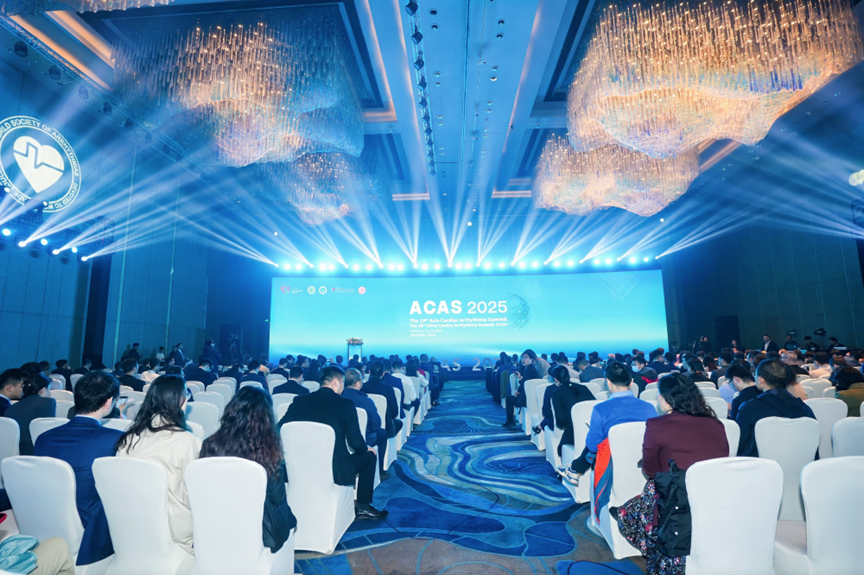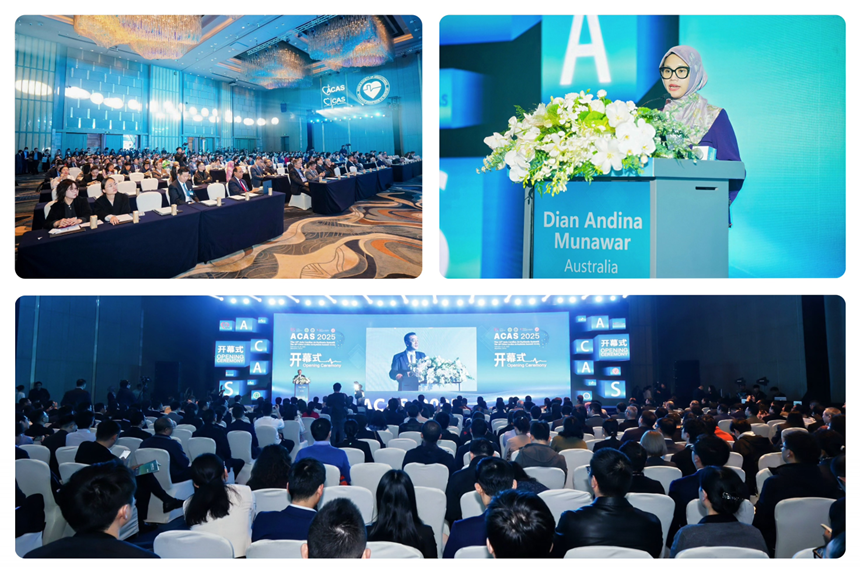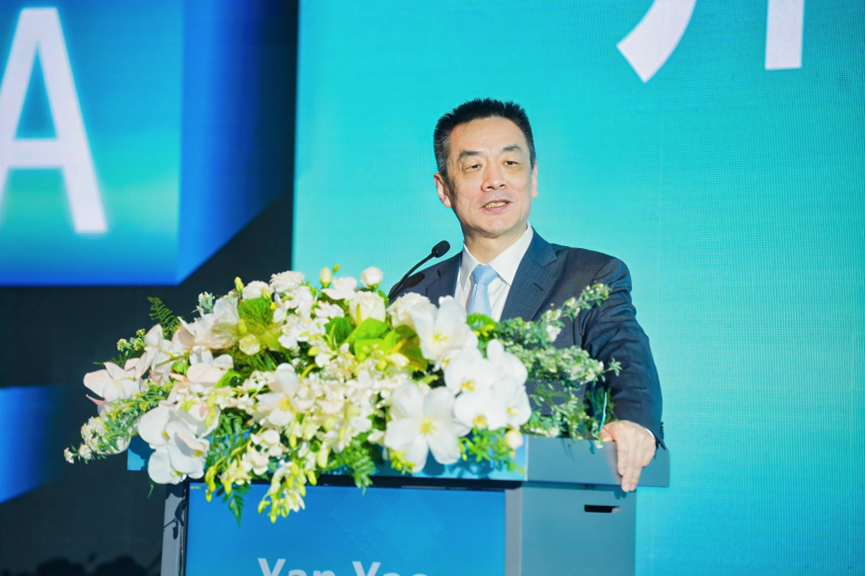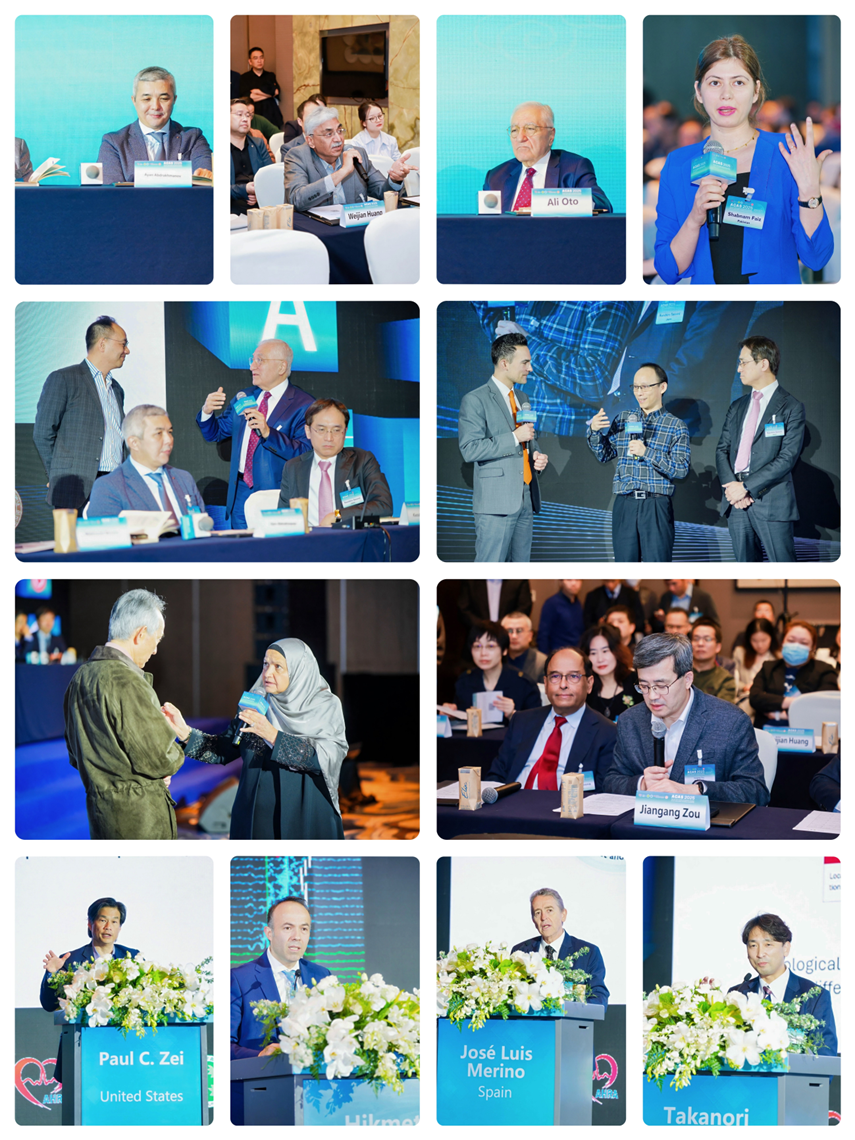Feb. 21, 2025
-
Feb. 23, 2025
shenzhen
A Decade of Diligence, Innovating for the Future | The 10th Asia
Cardiac Arrhythmia Summit (ACAS 2025) and the 16th China Cardiac
Arrhythmia Summit (CCAS 2025) Successfully Held in Shenzhen

From February 21 to 23, 2025, the 10th Asia Cardiac Arrhythmia Summit (ACAS 2025) and the 16th China Cardiac Arrhythmia Summit (CCAS), hosted by the Asian Heart Rhythm Association (AHRA), were successfully held in Shenzhen. Marking its 10th anniversary, the summit focused on the cutting - edge advancements in cardiac electrophysiology. Attracting over 1,200 leading doctors and top scholars from more than 30 countries around the world. Together, they contributed to a new chapter in the development of Asian cardiac electrophysiology.

This summit was supported by the American Heart Rhythm Society (HRS). Professor José Luis Merino, President of the European Heart Rhythm Association (EHRA), Professor Ali Oto, President of the World Heart Rhythm Society (WHRS), Professor Akihiko Nogami, President of the Japanese Heart Rhythm Society (JHRS), Professor Mervat Aboulmaaty, President of the African Heart Rhythm Association (AFHRA), Professor Ayan Abdrakhmanov from the Central Asian Heart Rhythm Association (CARHA), Professor Samuel J. Asirvatham from the Mayo Clinic in the United States, Professor Sunny Po from the University of Oklahoma Health Sciences Center, and Professor Paul C. Zei from Brigham and Women's Hospital, along with other experts and internationally renowned scholars, attended the summit to jointly promote the globalization process of Asian cardiac arrhythmia diagnosis and treatment standards.

On the morning of February 22, the opening ceremony was held in Shenzhen. Professor Dian Andina Munawar from Indonesia presided over the opening ceremony.

Professor Yao Yan, the conference chairperson and director of the Arrhythmia Center of Fuwai Hospital, Chinese Academy of Medical Sciences, stated in his speech: Currently, the global cardiac arrhythmia field is undergoing a technological revolution characterized by precision, intelligence, and interdisciplinary integration. For example, new ablation technology breakthroughs represented by pulsed - field ablation, and the transformation of the cardiac arrhythmia diagnosis and treatment paradigm deeply empowered by AI, covering the entire process of electrocardiogram monitoring, risk stratification, and surgical optimization. In terms of disease prevention and treatment, Asia is transforming from a "technology follower" to a "rule - maker". Asia accounts for 47% of the world's total cardiac arrhythmia patients. China alone performs over one million cardiac interventional surgeries each year, with the volume of complex atrial fibrillation ablation ranking first in the world for five consecutive years. "Chinese solutions" represented by strategies such as patchy ablation for arrhythmogenic right ventricular cardiomyopathy (ARVC) ventricular tachycardia and individualized atrial fibrillation linear ablation techniques, have been promoted to more than 30 countries through the Asia Heart Rhythm Association platform. In addition, relying on the "Belt and Road" membership countries, a remote surgical guidance system covering Southeast Asia and South Asia has been established, training over 400 international operators. Professor Yao emphasized: "By continuously promoting the innovation loop of 'basic research - clinical transformation - industrial collaboration', China is building a replicable and sustainable new model for the prevention and treatment of cardiac arrhythmias. This is not only a contribution of Asian wisdom to global medicine but also a vivid practice of the concept of a community with a shared future for mankind in the health field."

This summit featured a multi - dimensional academic matrix: The New Original Research Forum focused on original research forces and concentrated on showcasing Asian innovation achievements; the Progress in Atrial/Ventricular Arrhythmia Forum targeted the key points of diagnosis and treatment and promoted the iteration of technical paradigms; the Pacemaker Forum introduced the knowledge and breakthrough of technologies through complex device implantation cases; the Children's Electrophysiology Forum integrated gene research and imaging technology to build a multi - disciplinary collaboration system. The Complication Forum systematically analyzed emergency response strategies such as cardiac tamponade, and discussed complex cases to strengthen clinical decision – making skill.
